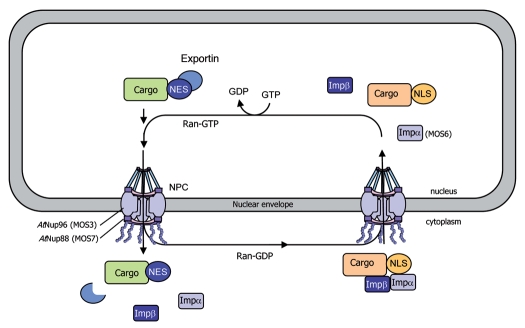Figure 2.
Model for nucleocytoplasmic transport of macromolecules through the nuclear pore complex. Cytoplasmic proteins with a nuclear localization signal (NLS) are translocated into the nucleus through nuclear pore complexes (NPCs), which are composed of nucleoporins (Nups) and span the double membrane of the nuclear envelope. The NLS in cargo proteins is recognized and bound by importin receptors (importin α and β) promoting their transport across the NPC, via the importin β-mediated interaction with Nups. The Ras-related nuclear (Ran) protein provides the directionality of transport via its binding to GDP (cytoplasmic side) or GTP (nuclear side). Export receptors (exportins) recognize nuclear export signals (NES) in cargo proteins and promote their nuclear export to the cytoplasm. Mutations in AtNup96 (MOS3), AtNup88 (MOS7) and importin α3 (MOS6) have been shown to impair the nuclear transport of immunity components, resulting in altered defense responses.

